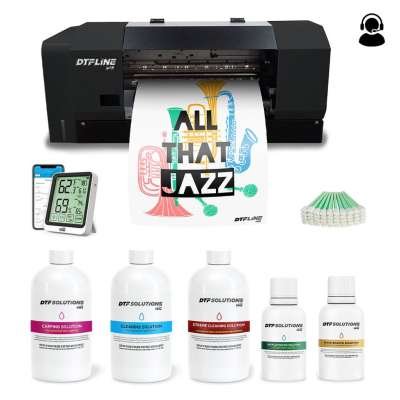In today’s fast-paced print industry, producing vibrant, high-quality fabric prints is essential for staying competitive—whether you’re a hobbyist, a small business owner, or scaling a full-service custom apparel shop. Among the top contenders for stunning textile printing is the DTG Pro printer, a tool that’s become synonymous with quality and efficiency. This guide will help you master the DTG Pro and explore how it fits into the broader landscape of print technology, including DTF printers, UV DTF printers, and more.
What is DTG Pro?
DTG Pro stands for “Direct-to-Garment Professional,” and as the name suggests, this printer directly applies ink onto garments. Unlike traditional screen printing, which requires setup and stencil creation, DTG Pro printers use inkjet technology to digitally print designs directly onto fabric. This means more color flexibility, detailed image reproduction, and no need for minimum order quantities—making it perfect for custom, on-demand orders.
Whether you’re printing one shirt or a hundred, the DTG Pro printer delivers consistently vibrant and durable results, especially when printing on cotton-rich materials.
Why Choose DTG Pro for Your Fabric Prints?
- High-Resolution Prints
The DTG Pro excels in capturing even the tiniest details in complex designs. With resolutions up to 1440 dpi, your prints will showcase every gradient and fine line. - Eco-Friendly Water-Based Inks
DTG Pro printers often use water-based pigment inks, which are safer for the environment and your workspace, making them a smart choice for eco-conscious businesses. - Low Setup Cost
No screens or plates are needed. Just load your artwork, pre-treat the garment, and print. This makes it ideal for businesses taking small or one-off orders. - User-Friendly Interface
Beginners will appreciate how intuitive the DTG Pro system is. It’s designed for ease-of-use, making it a great entry point into the custom print industry.
DTG Pro vs DTF Printers: What’s the Difference?
While DTG Pro is perfect for cotton fabrics and detailed prints, DTF (Direct to Film) printers offer another level of flexibility. DTF printers use a special film and adhesive powder to transfer images onto a wide variety of fabrics—including polyester, blends, and even leather.
If you’re just starting out, exploring DTF printers for beginners can be a worthwhile option. Many entry-level models are budget-friendly and capable of handling small runs efficiently.
Best DTF printers on the market today often include features such as:
- White ink circulation to avoid clogging
- Automatic powder application and curing
- Compatibility with multiple fabric types
When choosing between DTG and DTF, consider your primary fabric types and volume needs. DTG Pro is unbeatable for high-quality cotton prints, while DTF printers for small businesses offer unmatched versatility.
What About UV DTF Printers?
UV DTF printers represent a newer frontier in digital printing. These machines allow you to print onto hard surfaces like glass, wood, metal, and plastic using ultraviolet light to cure the inks instantly. This opens the door for product customization beyond apparel—think custom phone cases, bottles, signage, and more.
For a business looking to diversify its offerings, combining DTG Pro, DTF, and UV DTF printers can create a powerhouse of customized product capability.
Tips for Mastering the DTG Pro
1. Proper Garment Pre-Treatment
Pre-treating your garments is critical for ink adhesion and color vibrancy. Invest in a quality pre-treatment machine or practice consistent hand-spraying techniques.
2. Test Prints Save Money
Always run a test print on a scrap or inexpensive fabric before starting a large batch. This helps you calibrate colors, placement, and print settings.
3. Regular Maintenance
Clean the printhead and run nozzle checks frequently. The DTG Pro, like all high-performance printers, requires regular upkeep to maintain print quality.
4. Use the Right Software
The DTG Pro comes with compatible RIP software (Raster Image Processor), which controls how the image is printed. Learn the software inside and out—it’s the key to optimizing your print output.
5. Keep an Eye on Humidity
Your workspace should maintain consistent humidity (ideally around 45-55%) to prevent ink drying or clogging issues.
Starting a Print Business? Combine Technologies
Many entrepreneurs are now building successful businesses by combining DTG Pro printers with DTF printers for small business use. Start with DTG for premium cotton t-shirts and expand with DTF for diverse fabric offerings. If you’re ready to scale or diversify, UV DTF printers let you step into the world of personalized merchandise.
Final Thoughts
The DTG Pro is a powerful tool for anyone serious about high-quality textile printing. Whether you’re a beginner testing the waters or a small business ready to expand, combining DTG with DTF and UV DTF printer technologies can give you a competitive edge in the booming custom product market.
Remember: the key to flawless fabric prints isn’t just in the hardware—it’s in understanding the process, choosing the right tools, and committing to consistent quality. Master your DTG Pro, explore the world of DTF printers, and watch your print business thrive.
